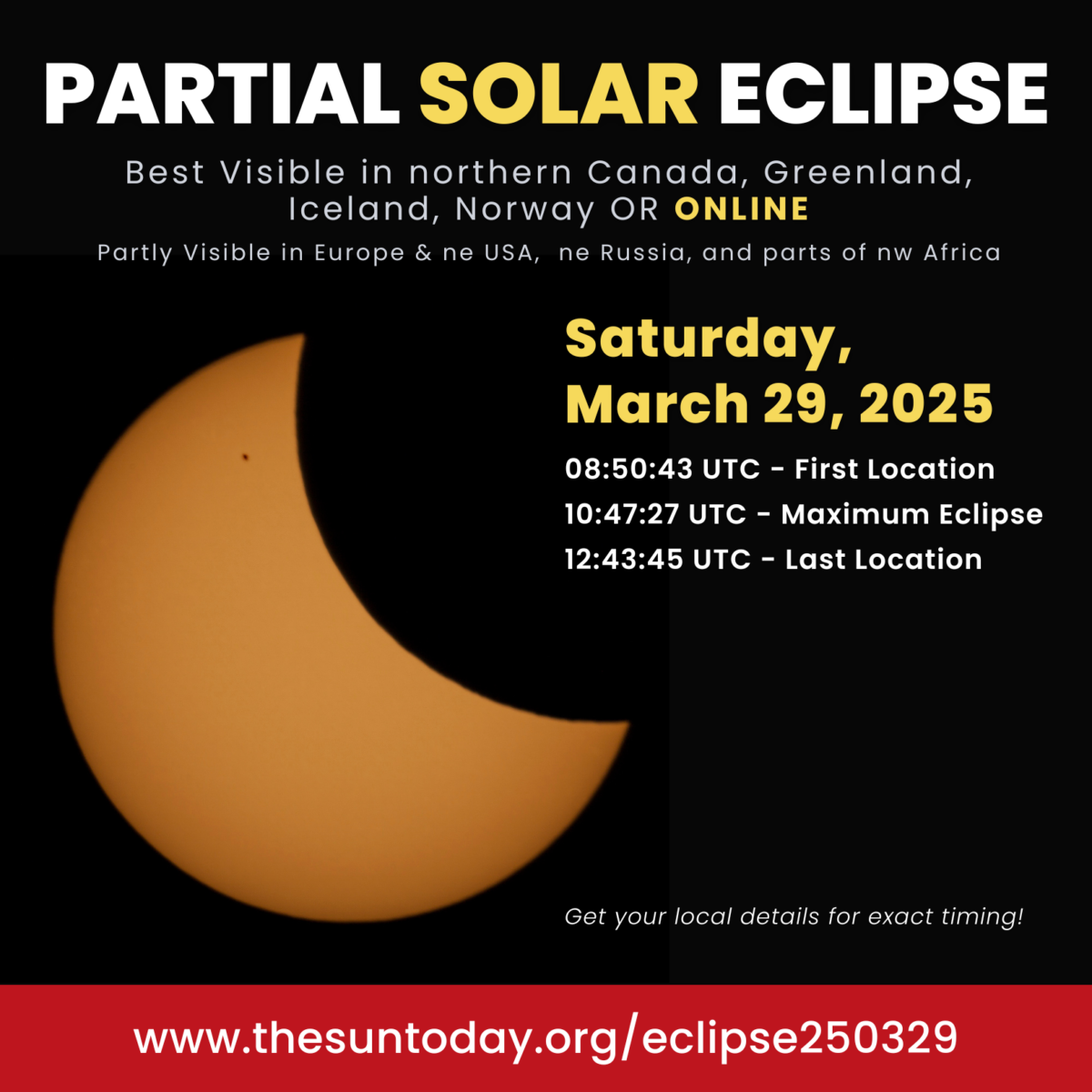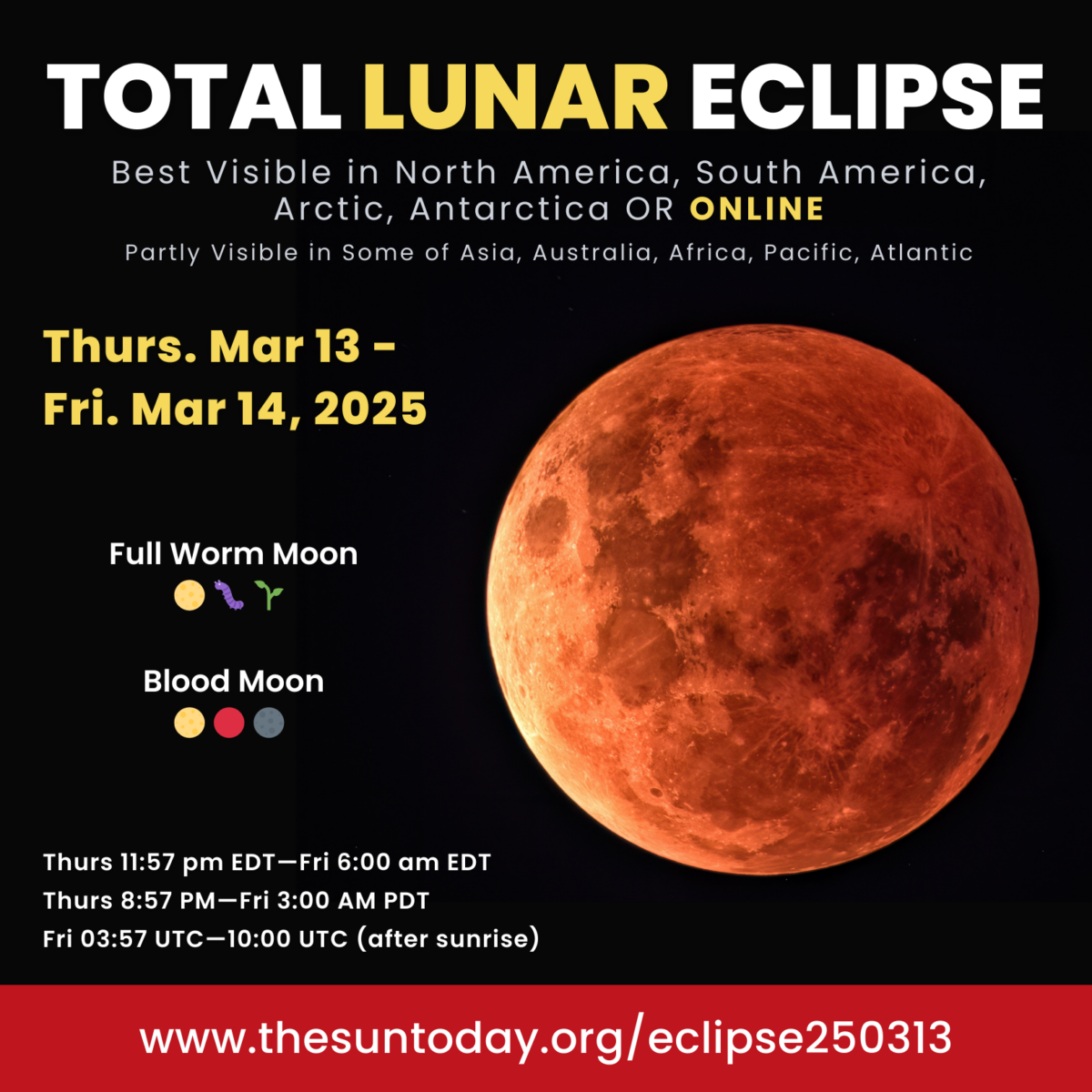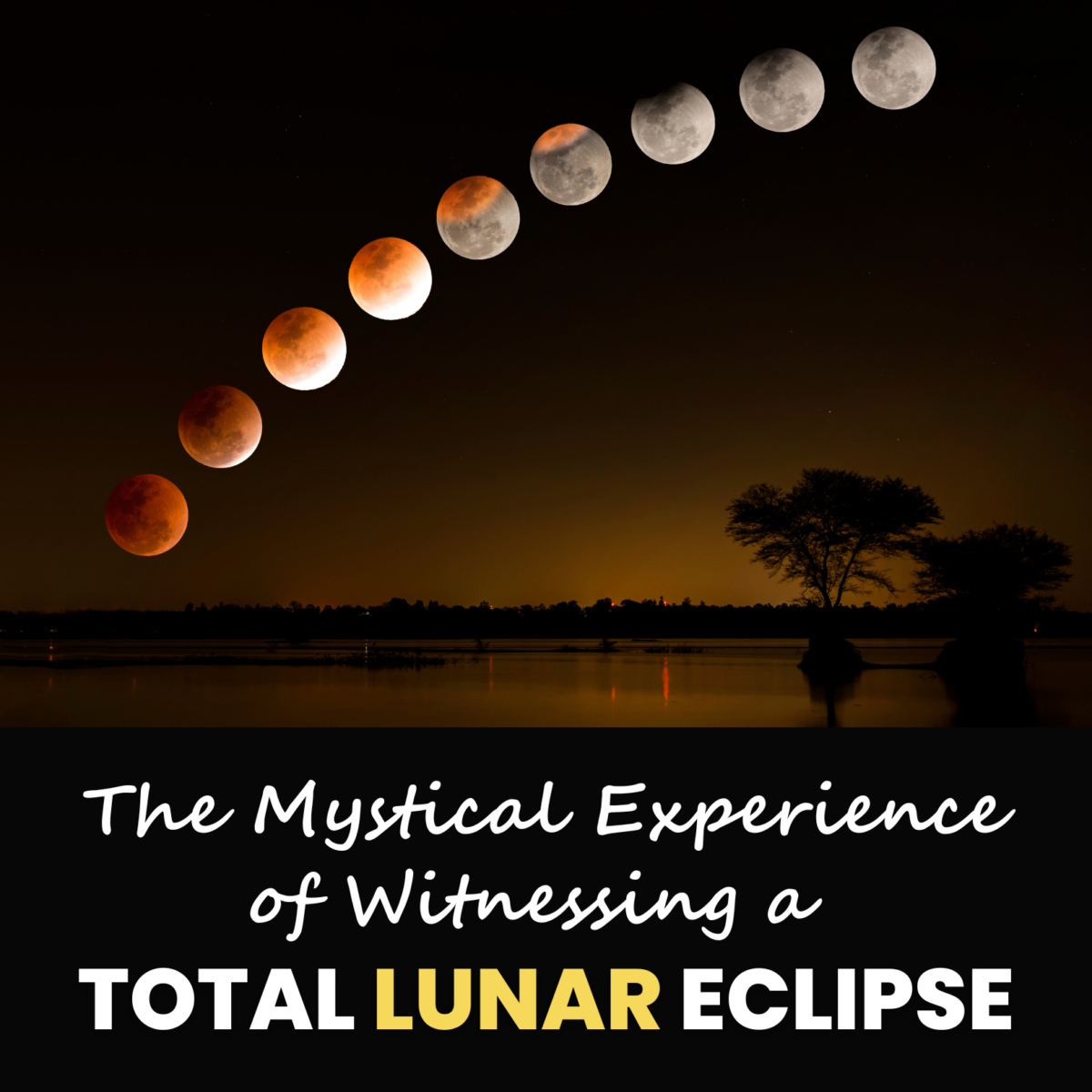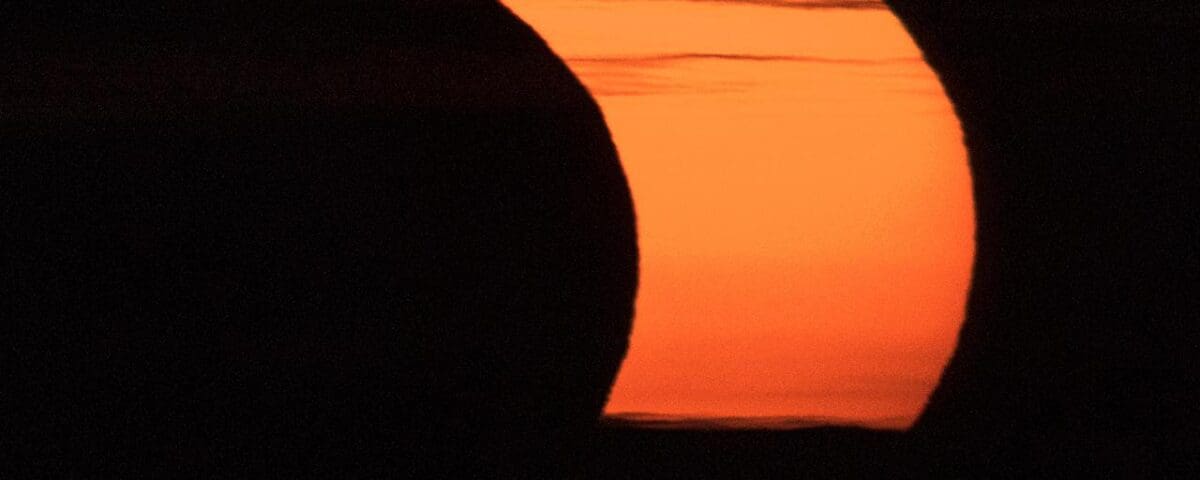
A partial eclipse is fun! Here are some tips to enjoy.
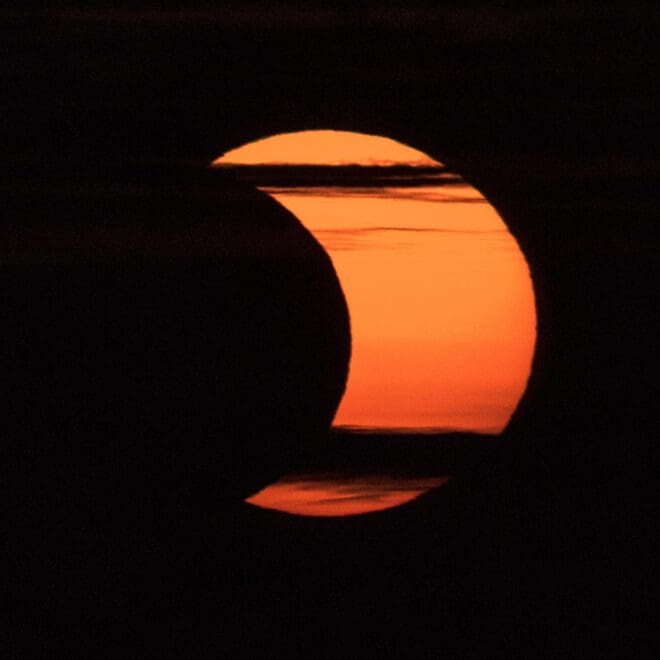
A partial solar eclipse is seen from Arlington, Virginia, Thursday, June 10, 2021. The annular or “ring of fire” solar eclipse is only visible to some people in Greenland, Northern Russia, and Canada. Photo Credit: (NASA/Bill Ingalls)
Use eclipse glasses (not sunglasses) to view the eclipse directly.
Remember, you should only look at the sun directly with the eclipse glasses. Eye safety details…
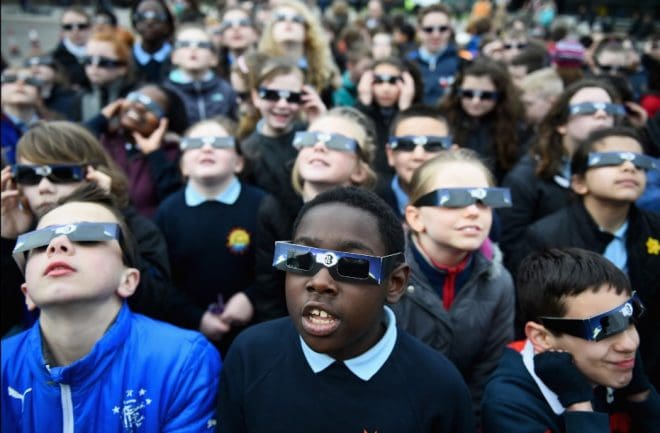
CREDIT: Courtesy Mark Margolis / Rainbow Symphony
Look for weird shadows
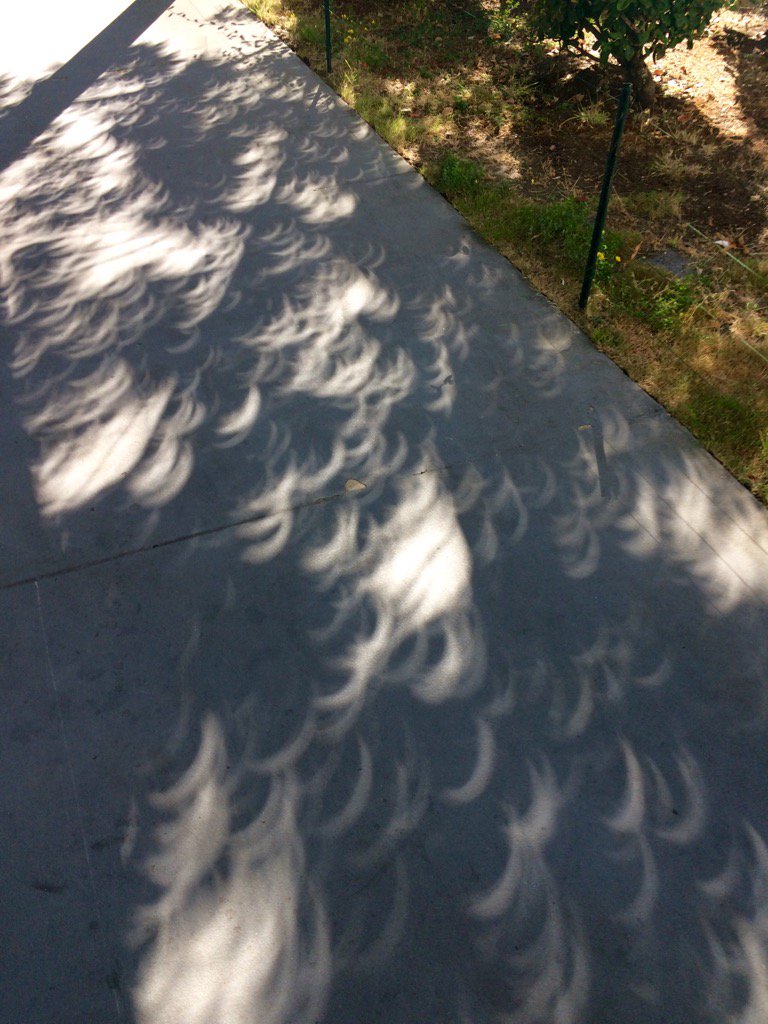
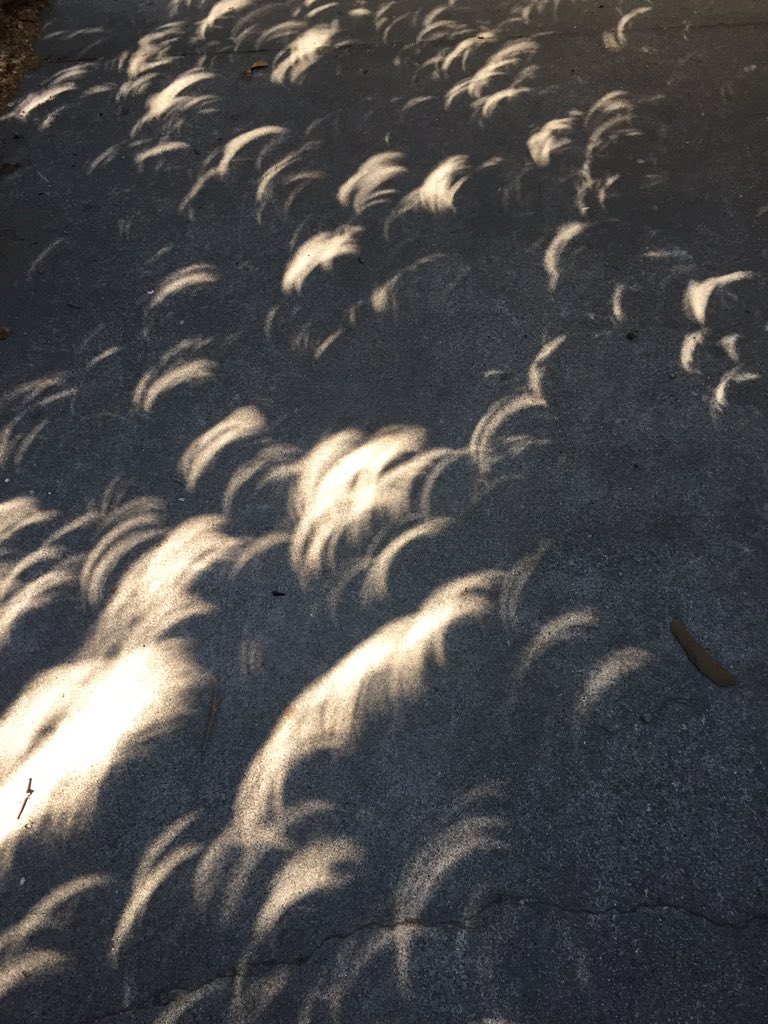
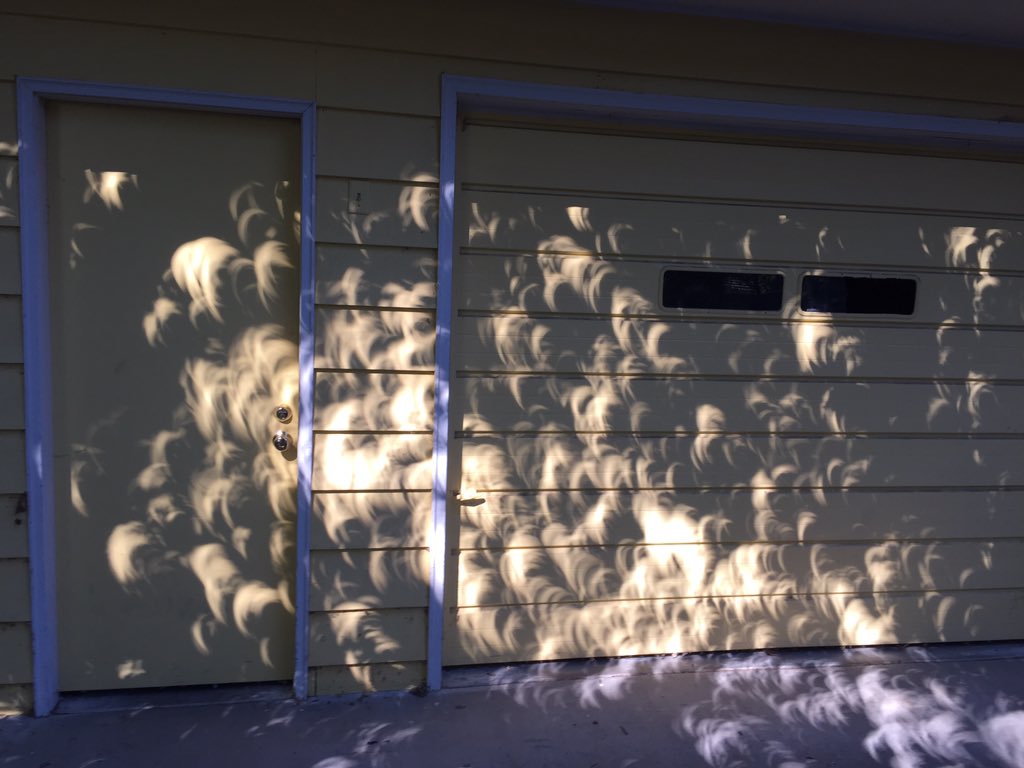
Hold up a colander with the Sun behind you so that the hole in the colander projects little Suns onto the ground.
You can watch the eclipse progress, and those little Suns will be crescent-shaped like the crescent of the Sun as the Moon progresses across it.
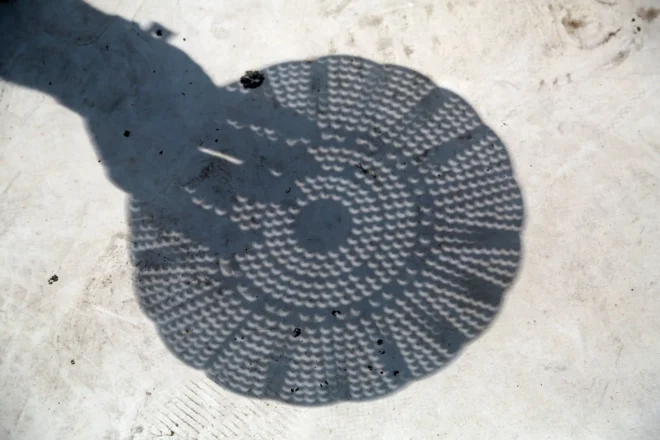
The circular holes of a colander project crescent shapes onto the ground during the partial phases of a solar eclipse.
Credit: Joy Ng
You can cross your fingers with the Sun behind you in a crisscross or waffle pattern.
This will also project little Suns and crescents onto the ground. The leaves in the bushes and trees create a similar effect, so look around at all the shadows. Watch the shadows change over time. Shadows are normally fuzzy or blurry on the edge, but they will begin to get very sharp.
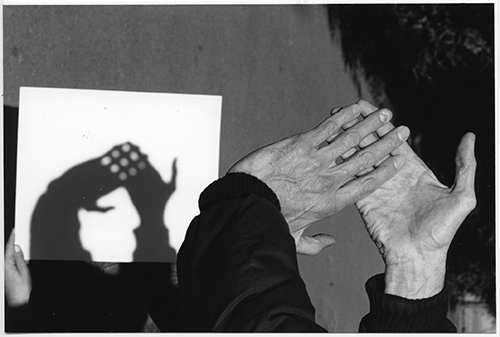
You can take a piece of paper or a notecard and punch a hole with a pushpin or tack.
Hold it over the ground with the Sun behind you to create the little Suns and crescents again. You can even punch a word or pattern into the paper or card and see what it looks like on the great.
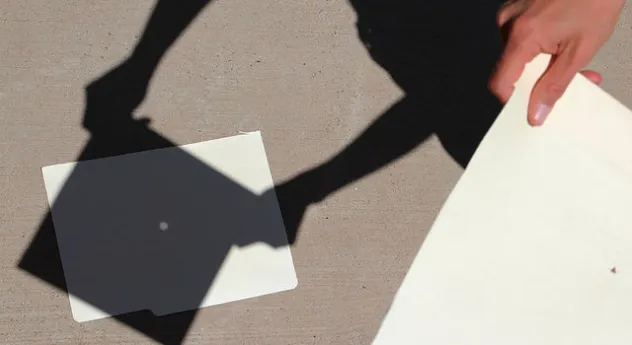
A pinhole projector is in use. (Photo/NASA/JPL)
If you are only going to watch for a short period, try focusing on the peak time. Look for strange changes in the light.
If possible, give yourself at least 15-20 minutes before the peak to observe the changes around you. If you’re above 50% eclipsed, you may be able to experience this. You can also see this in photos and videos of the eclipse. As we get closer to the peak, the light will start to dim, and the color/tint of the light will change to silver, blue, or gray. It is like you are in a photo filter all of a sudden. Most times, when the sky darkens, it is because of a storm, a sunrise, or a sunset. Most times, when you see shadows, it is when the Sun is out and shining above you. However, during an eclipse, these two scenarios are combined: the sky darkens while there are sharp, distinct shadows, and the Sun shines.
BONUS: Notice the Purkinje effect by wearing red, green, or blue.
“In low light, bright reds appear darker, faded and sometimes almost black, while blues and greens tend to become more vibrant — and a total solar eclipse provides an ideal opportunity to observe this shift.” (Source: , CNN – Find out more about this here.)
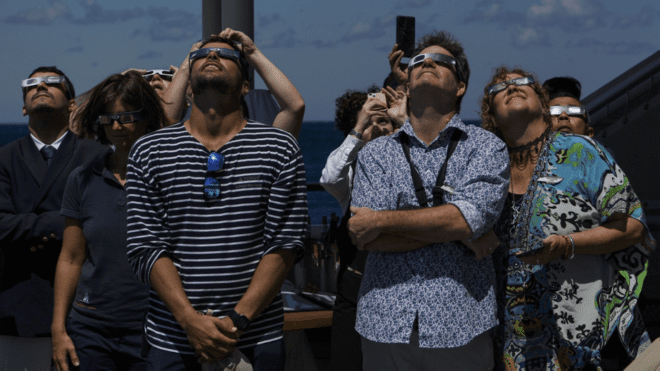
You can see more details about the timing of the eclipse at timeanddate.com, where you can put specific locations.
For example, Towson, MD:
2:05:18 PM – Partial eclipse begins
The moment the edge of the Moon touches the edge of the Sun is called first contact.
2:06 PM – Moon bites Sun
Using eclipse glasses, the eclipse starts to become visible to the eye.
2:28 PM – Obscuration around 20%
The Moon covers one-fifth of the area of the Sun’s disk.
2:35 PM – Temperature changes
As the Moon covers the Sun, the amount of solar energy decreases.
2:43 PM – Sharp & blurry shadows
Shadow edges that are aligned with the Sun’s narrowing crescent become sharper.
2:51 PM – Brightness of sky
As the eclipse progresses, the sky starts to become noticeably darker.
2:59 PM – Temperature, humidity & wind
Conditions continue to change as the amount of solar energy decreases.
3:07 PM – Light levels & colors
Surroundings start to darken, while colors start to turn grayish.
3:21:21 PM – Maximum eclipse
The deepest point of the eclipse, with the Sun at its most hidden.
3:43 PM – Light levels & temperature
The conditions of the sky and surroundings are returning to normal.
4:12 PM – Obscuration around 20%
The Moon covers one-fifth of the area of the Sun’s disk.
4:33:31 PM – Partial eclipse ends
The edge of the Moon leaves the edge of the Sun.



